Photo Gallery

White-tailed Robin
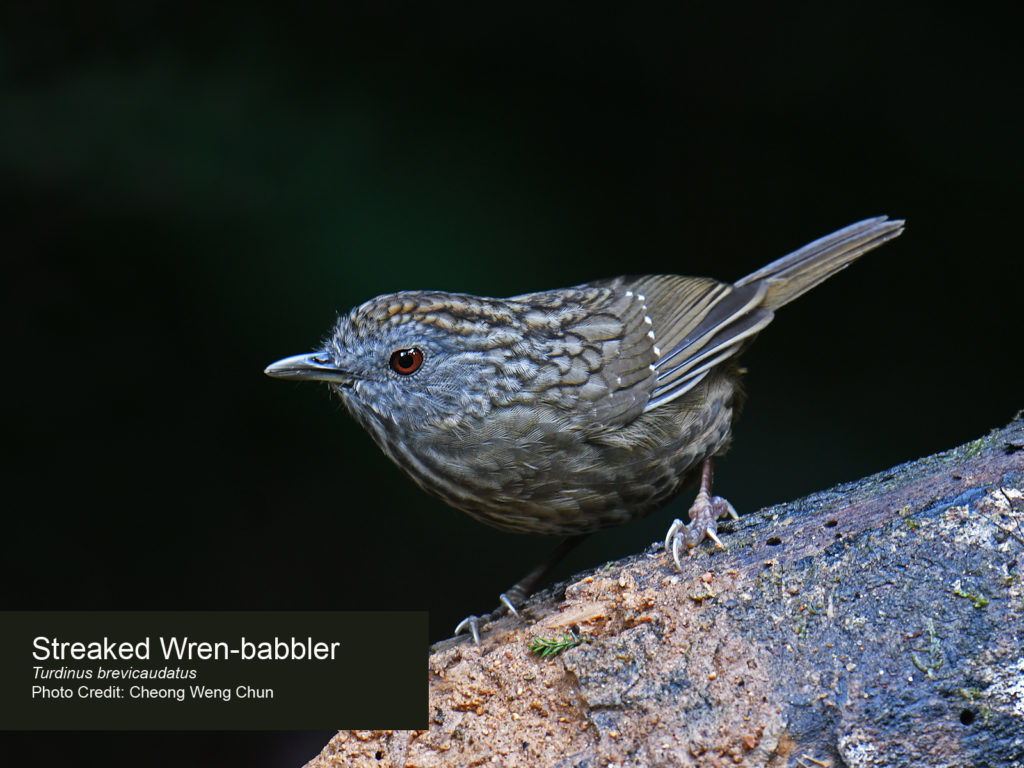
Streaked Wren-babbler
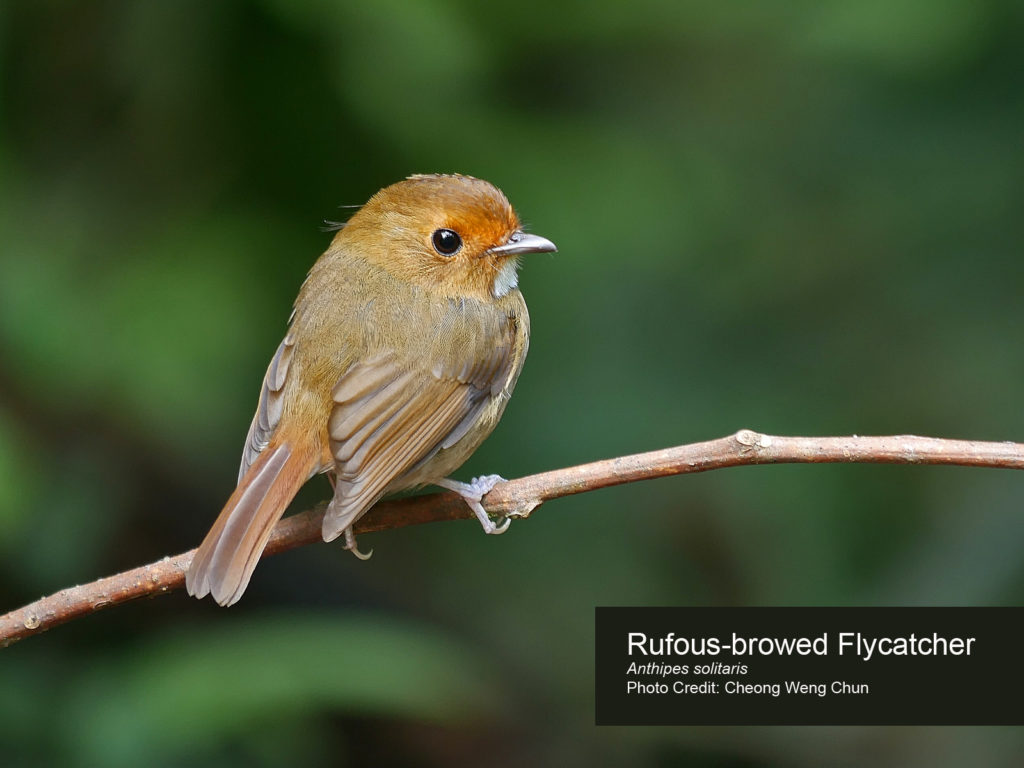
Rufous-browed Flycatcher

Malayan Laughingthrush
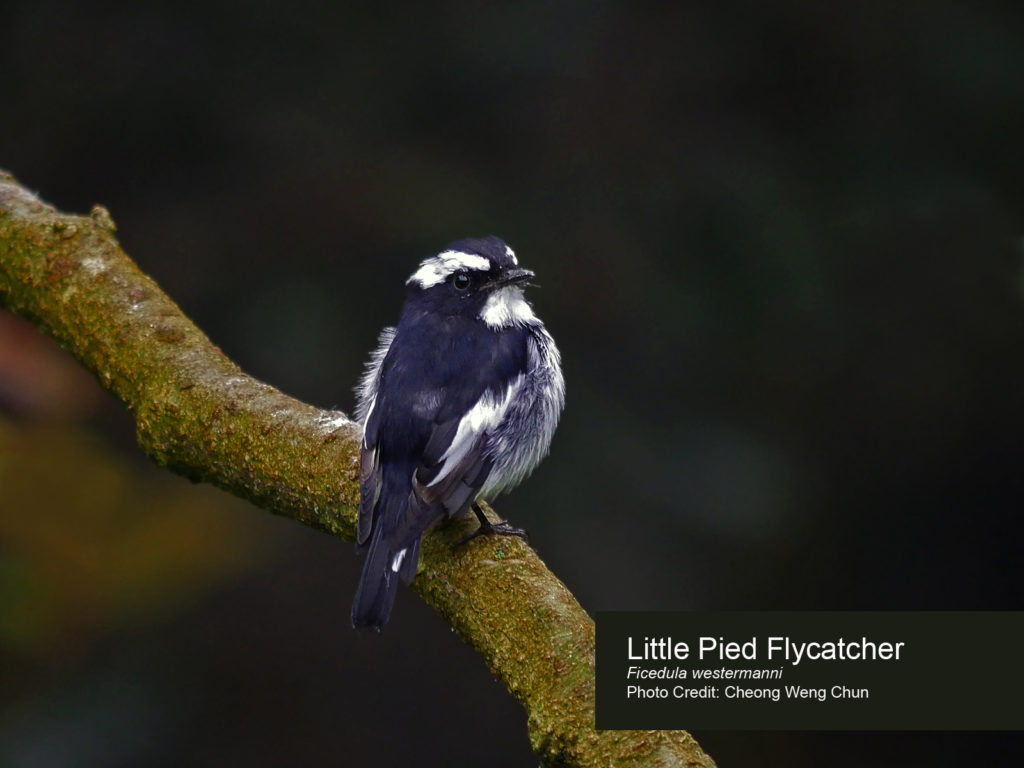
Little Pied Flycatcher
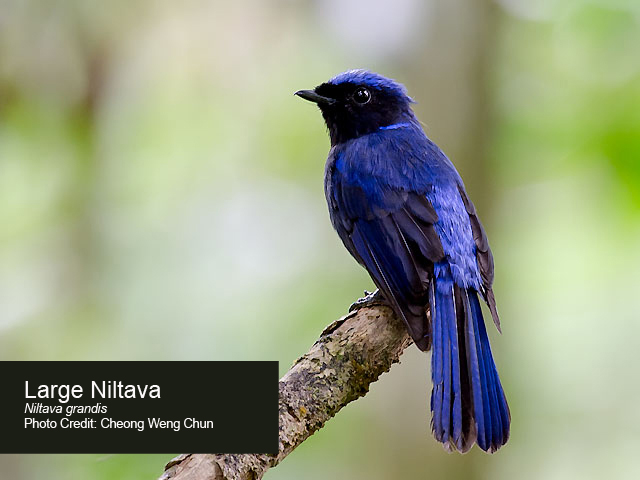
Large Niltava

Grey-throated Babbler

Crimson-winged Woodpecker

Crimson-headed Partridge

Laced Woodpecker (Picus vittatus)
30–33 cm; 94–132 g. Male has red forehead to crown and short crest, bordered by thin black line; narrow white eyering and short supercilium.. Habitat: Mangroves, deciduous forest, evergreen forest, secondary growth, bamboo, plantations, suburban sites..
More info / source: https://www.hbw.com/species/laced-woodpecker-picus-vittatus
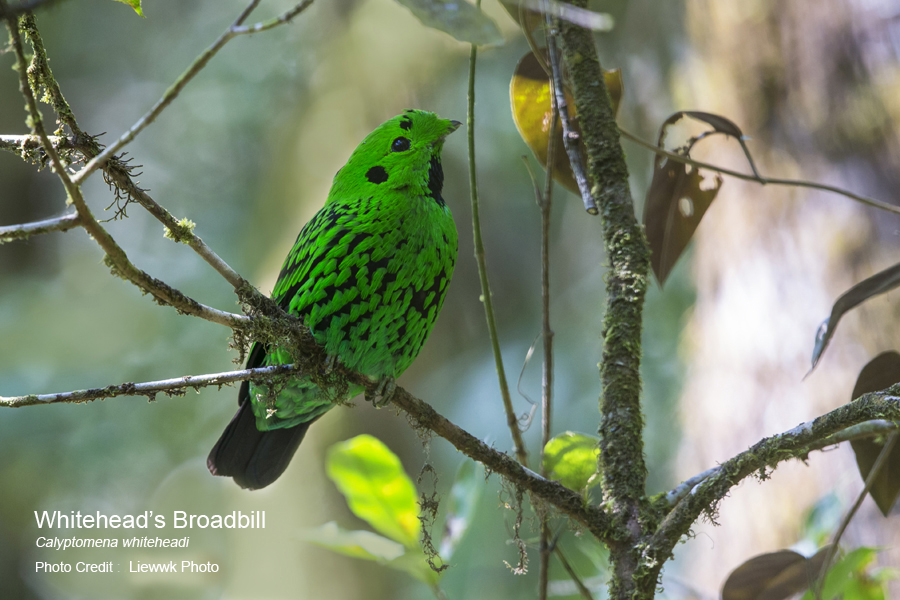
Whitehead’s Broadbill (Calyptomena whiteheadi)
24–27 cm; male 142–171 g, female 150–163 g. The largest green broadbill, with obvious black markings. Male has vivid green plumage, etc.. Habitat: Montane forest, also forest edge; preference for tall growth.. Endemic to North Borneo.
More info / source: https://www.hbw.com/species/whiteheads-broadbill-calyptomena-whiteheadi
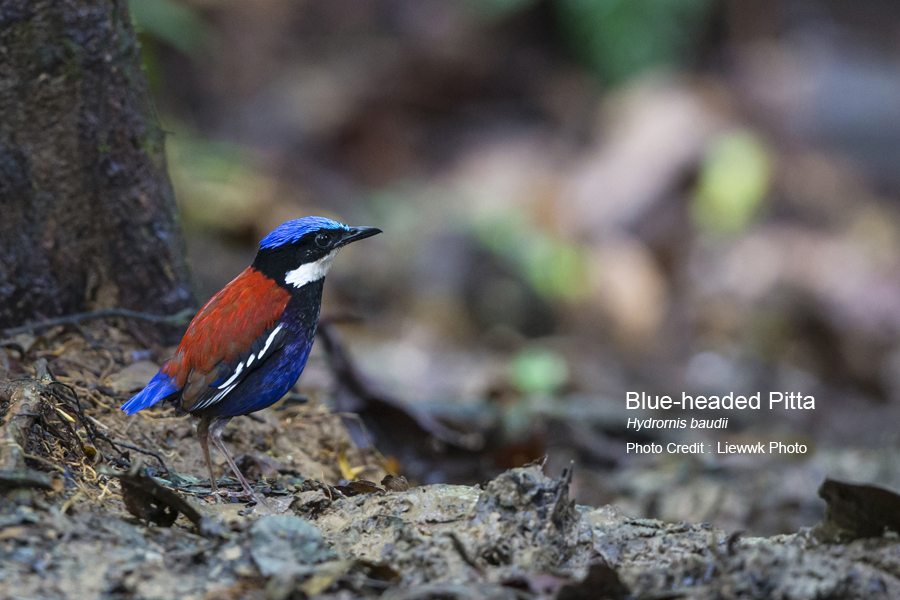
Blue-headed Pitta (Hydrornis baudii)
16–17 cm; male 56–69 g, female 65–76 g. Male has glossy blue forehead to nape, black lores and facial mask, maroon-red upperparts, blue tail and uppertail etc.. Habitat: Lowland primary forest and older secondary forest, also logged forest, often with a river nearby. Endemic to North Borneo.
More info / source: https://www.hbw.com/species/blue-headed-pitta-hydrornis-baudii
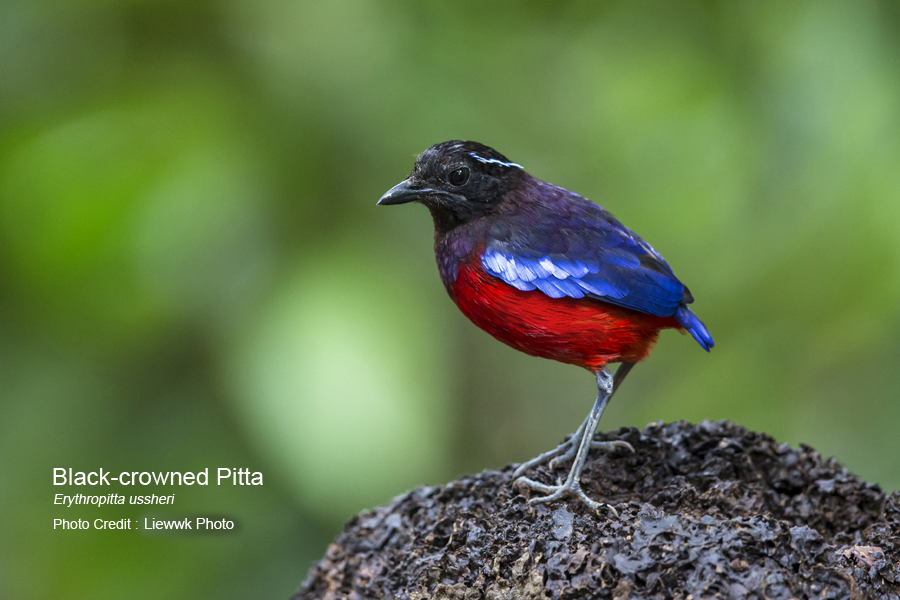
Black-crowned Pitta (Erythropitta ussheri)
13–16 cm; 58·5–59·5 g. Similar in most respects to formerly conspecific E. granatina, although both sexes average smaller in most biometric characters than both etc.. Habitat: Occurs in lowland dipterocarp, selectively logged and secondary forest etc..Endemic to North Borneo.
More info / source: https://www.hbw.com/species/black-crowned-pitta-erythropitta-ussheri

White-fronted Falconet (Microhierax latifrons)
14–17 cm; 35–65 g; wingspan 28–31 cm. Typical falconet (albeit marginally the smallest), with glossy blue-black upperparts, shortish tail etc. Habitat: Open forests, edges and clearings, including cultivated areas with scattered trees, from sea-level etc..
More info / source: https://www.hbw.com/species/white-fronted-falconet-microhierax-latifrons
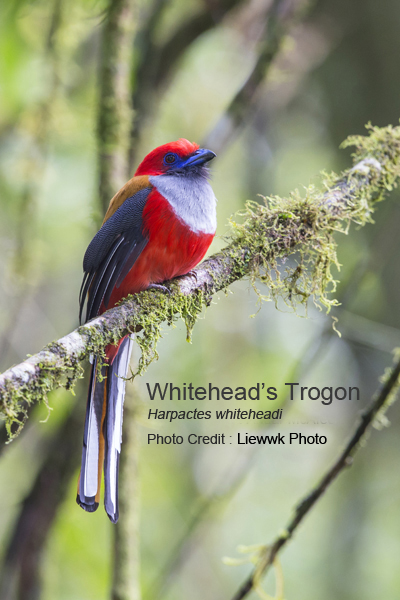
Whitehead’s Trogon (Harpactes whiteheadi)
29–31 cm. Male has red head, blue bill and orbital ring, black throat, grey breast, and red belly; pale rich brown upperparts; largely white undertail. Female like male. Habitat: Montane forest and sparse moss forest at 900–1500 m; frequents the dark, wet patches of old-growth forests etc..
More info / source: https://www.hbw.com/species/whiteheads-trogon-harpactes-whiteheadi
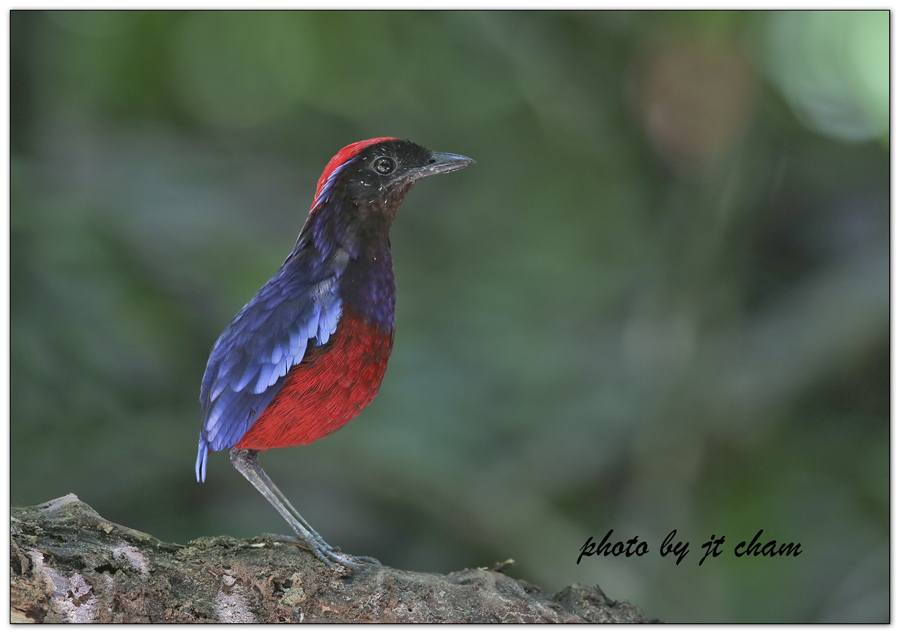
Garnet Pitta (Erythropitta granatina)
15–16 cm; 53–70 g. A small pitta with mostly black head, dark red hindcrown and nape, bright sky-blue postocular stripe; upperparts glossy black with purple wash. Habitat: Found in both dense primary forest and secondary to heavily logged forest, often swampy and usually etc..
More info / source: https://www.hbw.com/species/garnet-pitta-erythropitta-granatina

Buffy Fish-owl (Ketupa ketupu)
40–48 cm; 1028–2100 g. Smallest fish-owl. Facial disc pale buff, with white eyebrows; upperparts buff, streaked with dark brown, feathers edged with pale rufous.. Habitat: orest bordering streams, rivers, and lakes; also disturbed forest, trees beside rice fields etc..
More info / source: https://www.hbw.com/species/buffy-fish-owl-ketupa-ketupu
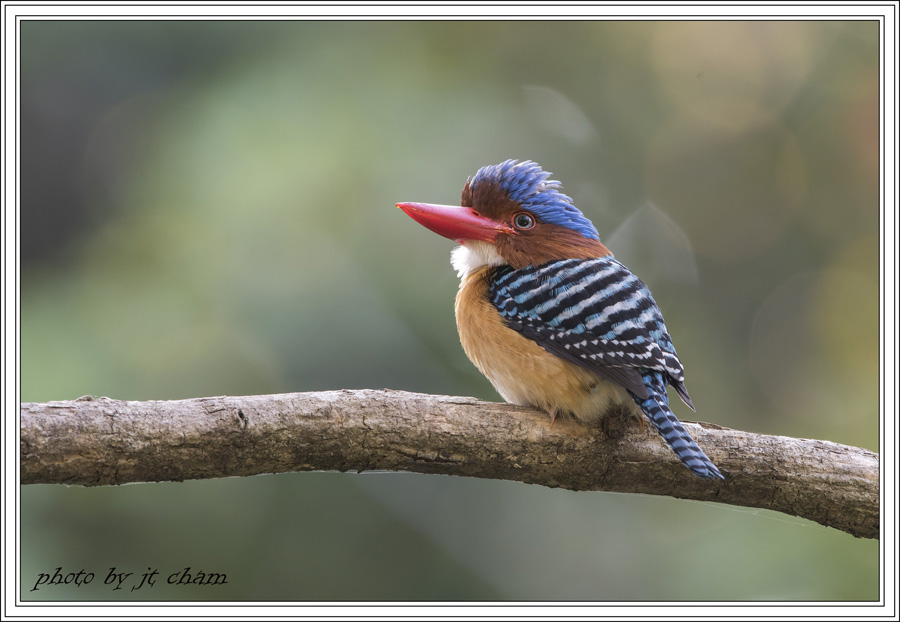
Banded Kingfisher (Lacedo pulchella)
20–24·5 cm; male 40·8–48·5 g, female 46·5–54·3 g. A small kingfisher, barred above, which regularly raises and lowers … Habitat: Lowland rainforest and bamboo-forest, hill forest, also secondary growth, peatswamp-forest etc..
More info / source: https://www.hbw.com/species/banded-kingfisher-lacedo-pulchella
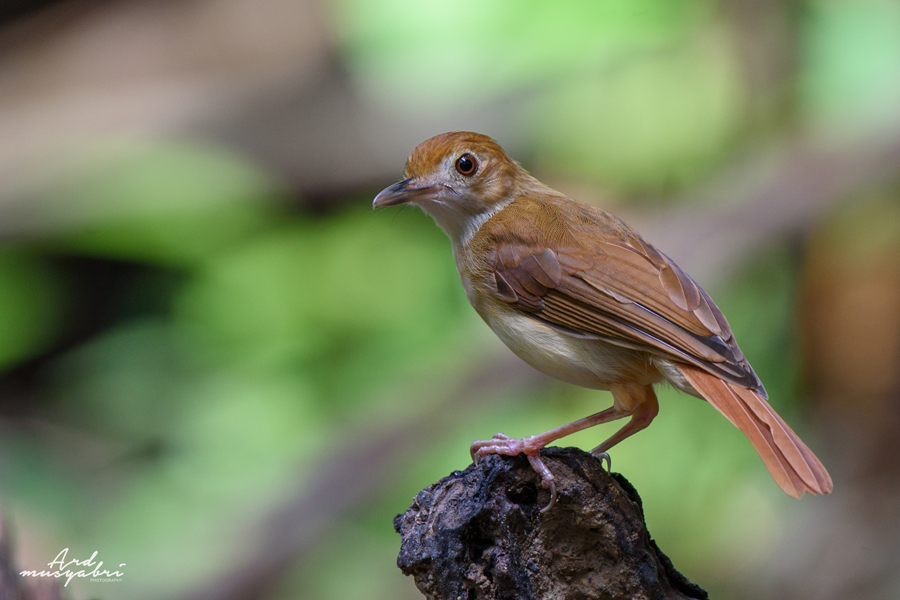
Ferruginous Babbler (Trichastoma bicolor)
16·5–18 cm; 27–34 g. Smallish babbler, rufous-brown above and creamy below, with brighter rufous tail and rather long hook-tipped bill. Crown is pale dull. Habitat: Closed-canopy lowland evergreen mixed dipterocarp forest, selectively logged forest, upland heath forest etc.
More info / source: https://www.hbw.com/species/ferruginous-babbler-trichastoma-bicolor
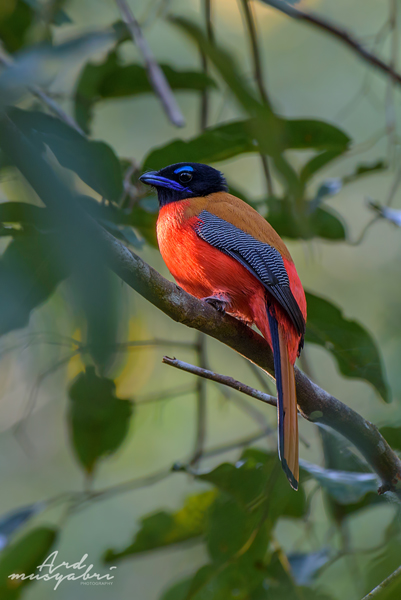
Scarlet-rumped Trogon (Harpactes duvaucelii)
23–24 cm; 34–43 g. Male has black hood with blue bill, eyebrow and narrow orbital ring; rich buff to yellowish-brown upperparts and uppertail, scarlet rump etc. Habitat: Chiefly middle but also lower storeys and borders of semi-evergreen and evergreen forest.
More info / source: https://www.hbw.com/species/scarlet-rumped-trogon-harpactes-duvaucelii

Blue-throated Bee Eater (Merops viridis)
21–23·5 cm (with streamers, up to 9 cm more); 34–41 g. Crown and mantle dark mahogany, chin, throat and cheeks blue; back, wings and lower scapulars green. Habitat: Beach-front scrub, dunes, pasture, farmland, suburban gardens, tin-tailings, sandy clearings etc.
More info / source: https://www.hbw.com/species/blue-throated-bee-eater-merops-viridis

Rufous Woodpecker (Micropternus brachyurus)
25cm; 55-84g. This medium-sized woodpecker has a short crest and a short slightly curved black bill. Overall plumage is rufous but male has speckled throat and small red patch on face. Female may look similar to male but lacks the red patch. It is very vocal with a series of “keenk” notes and can be heard in primary forest, secondary forest and even public parks. It feeds mainly on ants.
More info / source: https://www.hbw.com/species/rufous-woodpecker-micropternus-brachyurus
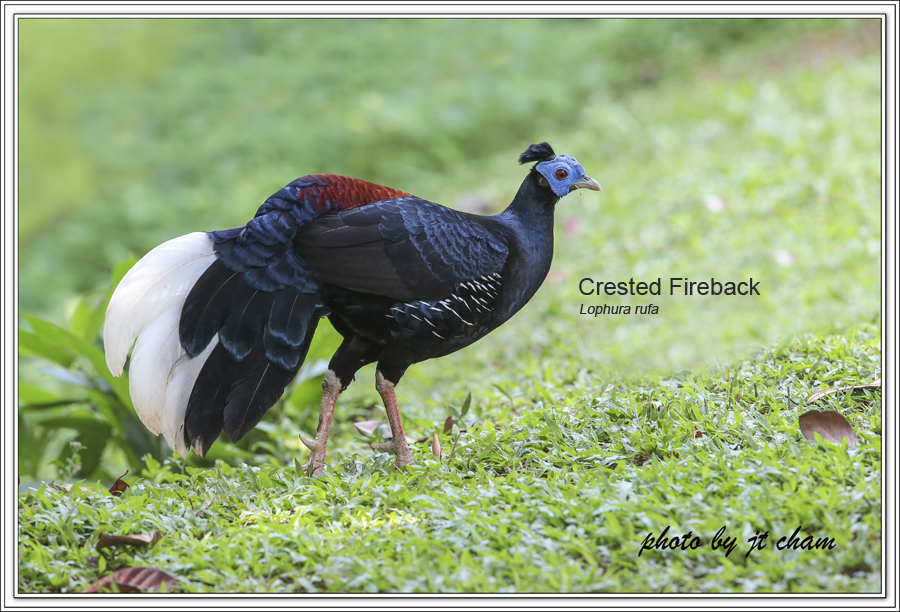
Crested Fireback (Lophura rufa)
56-70cm; 1350-2605g. The distinctive crested male has a white central tail, white streak flanks, blue facial skin and reddish to pinkish legs. Meanwhile, female is generally chestnut in appearance with streak breast and white-scaled belly. Most often ‘urr-urr-urr’ croaking is heard. It is found in lowland forest often near rivers. Roost on tree branches. Diets consist of fruits and invertebrates.
More info / source: https://www.hbw.com/species/malay-crested-fireback-lophura-rufa
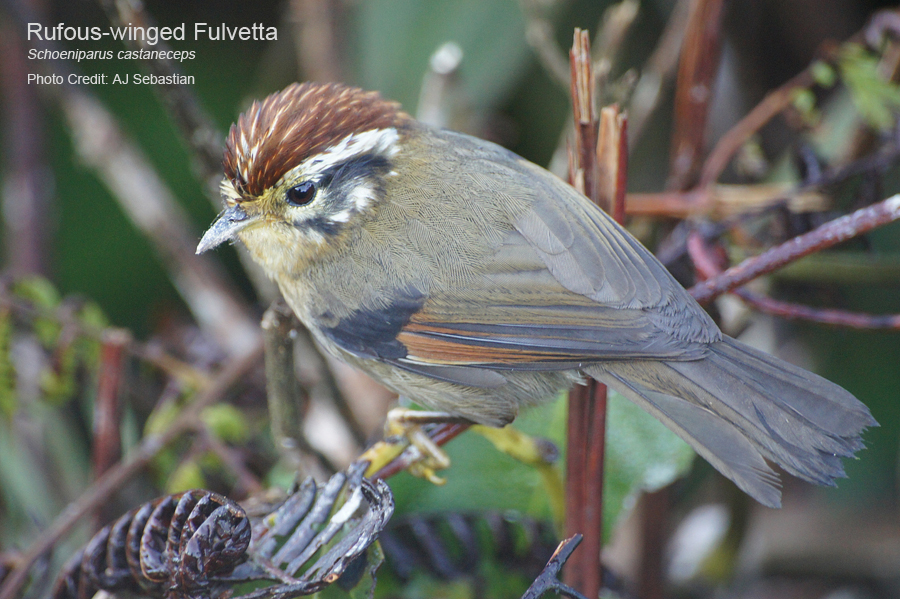
Rufous-winged Fulvetta (Schoeniparus castaneceps)
10-13cm; 8-12g. A noisy small-sized babbler with dark chestnut crown and rufous primaries on its wings. Its song is relatively high pitched. This species is found in montane forest above 1200m often in flocks. It feeds on insects and occasionally tree sap.
More info / source: https://www.hbw.com/species/rufous-winged-fulvetta-schoeniparus-castaneceps
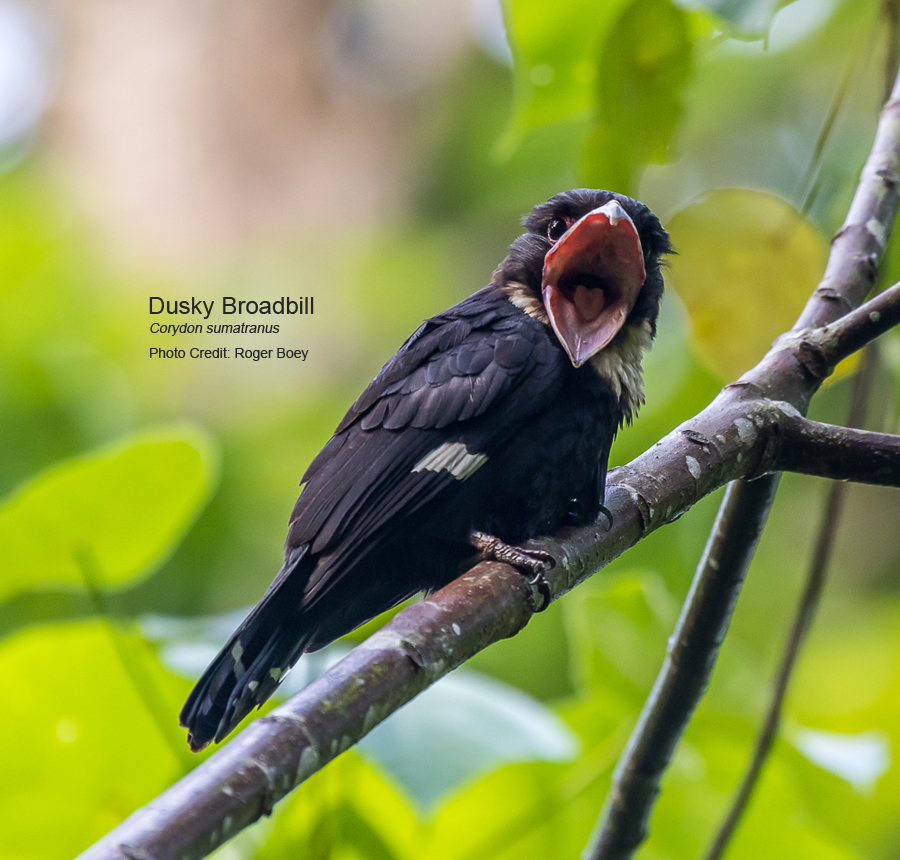
Dusky Broadbill (Corydon sumatranus)
24-28.5cm; 140g. The adult bird is blackish brown with pinkish broad bill. There is a noticeable small white patch on the wings. The call consists of 6-8 screaming notes. Found and seen in small flocks from lowland forest and up to highland forest of over 1,200m. Mainly insectivorous.
More info / source: https://www.hbw.com/species/dusky-broadbill-corydon-sumatranus

Crimson Sunbird (Aethopyga siparaja)
11.7-15cm; 4.8-9g. This Sunbird is found singly or pair in mangroves, secondary forest and flowering gardens. The down-curved bill allow them to feed on nectar and insects, especially spiders. Calls are rapid, sharp and high-pitched. The head of the male is red with dark greenish blue crown. Female is very dull compared to female of other species of Sunbird.
More info / source: https://www.hbw.com/species/crimson-sunbird-aethopyga-siparaja
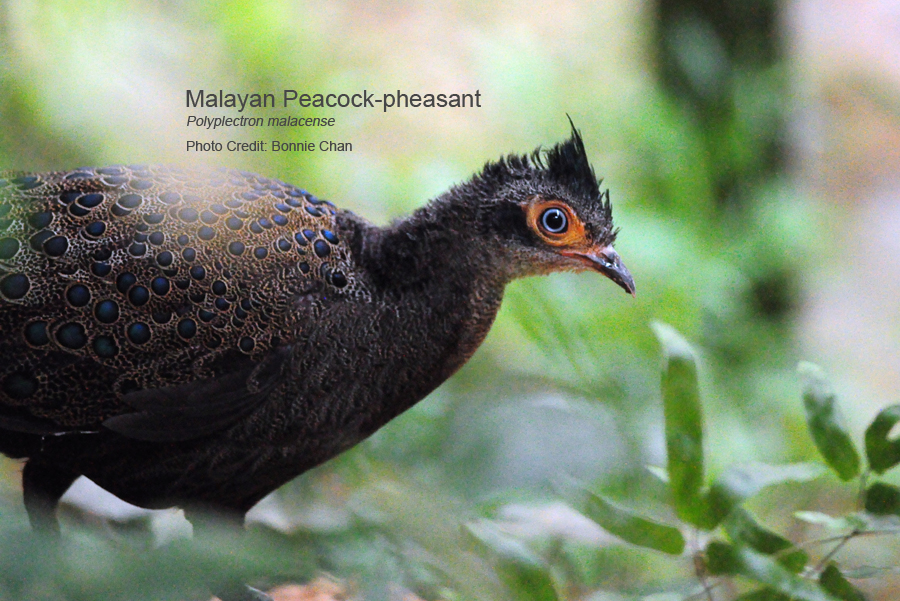
Malayan Peacock-pheasant (Polyplectron malacense)
40-53cm; 455-680g. Considered as an endemic to Malay peninsula, this species is relatively smaller than Mountain Peacock-pheasant. It is light brown above and orange face skin. Male has a pointed crested, greenish blue ocelli on the wings and tail feathers. Similar to some other species, the male has spurs on the legs which is probably used for fighting between males. Female lacks obvious crest and less distinct ocelli. Its harsh explosive call is regularly heard in the lowland forest of Taman Negara. Regularly seen feeding on grubs and other insects, but it could probably feeding on fruits too.
More info / source: https://www.hbw.com/species/malay-peacock-pheasant-polyplectron-malacense
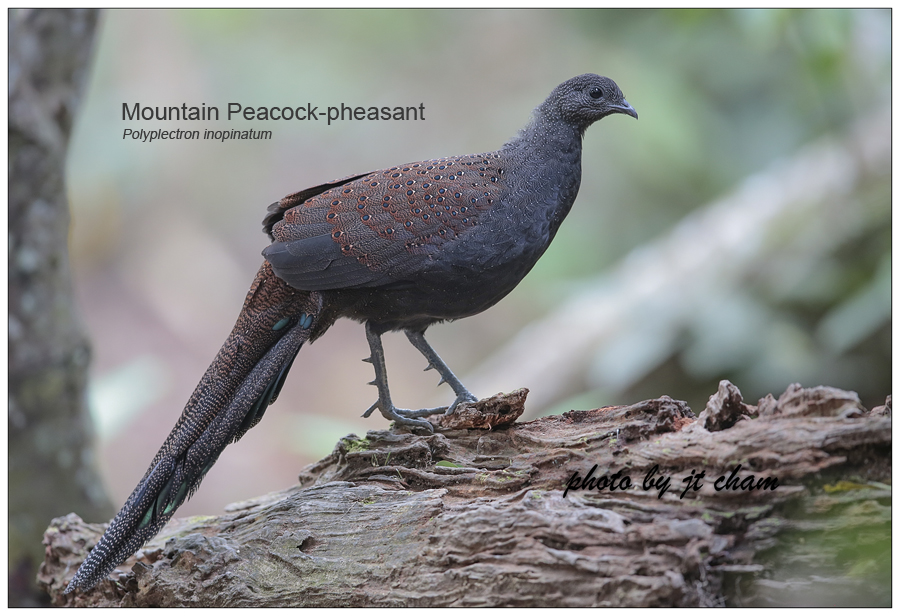
Mountain Peacock-pheasant (Polyplectron inopinatum)
46-65cm. This elusive bird is considered endemic to the highlands in central Peninsular Malaysia. It lacks an obvious crest making it easier to differentiate with a Malayan Peacock-pheasant. This species is chestnut brown above with small ocelli and dark greyish below. Whitish speckles on neck and head. Male has blue ocelli and 2 spurs on legs while female has black ocelli without any spur on legs. Sometimes 1-4 clucks heard but generally less vocal. Mountain Peacock-pheasant feeds mainly on ants, grubs, beetles, spiders and berries.
More info / source: https://www.hbw.com/species/mountain-peacock-pheasant-polyplectron-inopinatum

Ferruginous Partridge (Caloperdix oculeus)
27-32cm; 191-230g. Rufous head and underparts. Black and white scaling on mantle and sides of body. Male usually has 1 or 2 spurs. Female usually lack spur but not uncommon to see a short spur. Wings are light pale brown with black spots. The call comprises of a series of accelerating and ascending high notes but ends abruptly and harshly. They are found in forest from the lowland up to the highland. Ferruginous Partridge feeds on seeds, berries, figs and insects.
More info / source: https://www.hbw.com/species/ferruginous-partridge-caloperdix-oculeus

Pale Blue Flycatcher (Cyornis unicolor)
16.5-18cm; 16-19g. This fairly shy species is sometimes confused with Verditer Flycatcher, however Pale Blue Flycatcher is less turquoise and paler blue in appearance. Female is brown. Song is relatively melodious and thrush-like. It is found solitary or in pairs, in dense primary and secondary hill forest from the lowland up to the lower montane forest. It feeds on small invertebrates.
More info / source: https://www.hbw.com/species/pale-blue-flycatcher-cyornis-unicolor
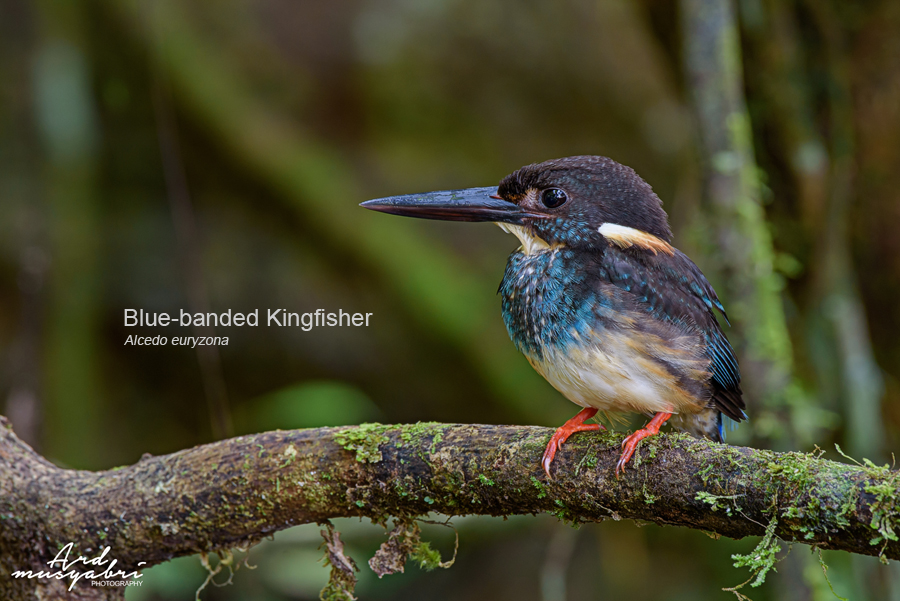
Blue-banded Kingfisher (Alcedo euryzona)
20-20.5cm; 38.7-48.5g. Male with distinctive blue breast band. Bill is large and blackish. Female lacks the blue breast band while the lower mandible is dull red. The flight call is similar to Common Kingfisher but probably a little harsher. It prefers habitat with flowing stream or river. Apart from fishes, it also hunts from low perch above the water for crustaceans, insects, larvae and small lizards.
More info / source: https://www.hbw.com/species/malay-blue-banded-kingfisher-alcedo-peninsulae

Orange-breasted Trogon (Harpactes oreskios)
25-31cm; 49 – 57g. This species is sexually dimorphic. Male is more attractive than the female which appears to be duller. The head of the male is greenish-olive while its underpart is yellowish-orange. Male will utter It inhabits the middle storey and lower canopy of forest trees. It feeds on cicadas, beetles, ants, stick insects and caterpillars.
More info / source: https://www.hbw.com/species/orange-breasted-trogon-harpactes-oreskios
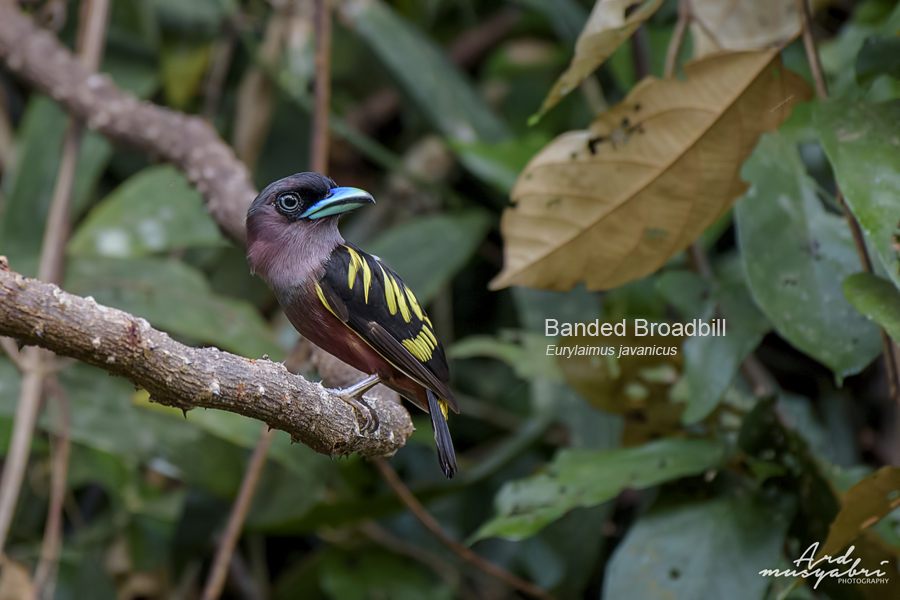
Banded Broadbill (Eurylaimus javanicus)
21.5-23cm; 74.7-87.5g. Banded Broadbill is considered a large broadbill with purple, yellow and black plumage. It prefers the forests including logged forest but will also forage at the edges of forest and open areas. This species is generally feeds on insects such as grasshoppers, crickets, beetles, and katydids.
More info / source: https://www.hbw.com/species/banded-broadbill-eurylaimus-harterti
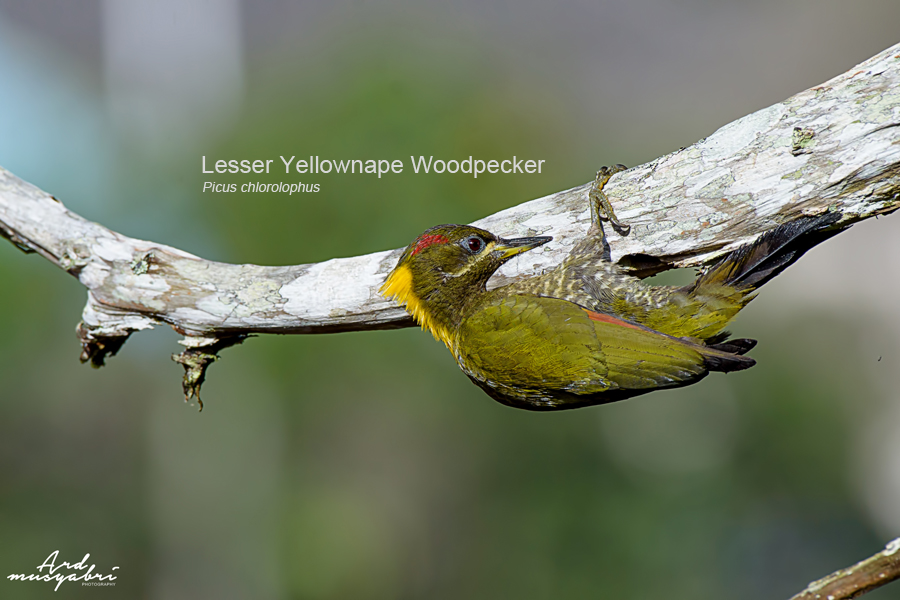
Lesser Yellownape (Picus chlorolophus)
25-28cm. It has a red crown, red submoustachial and barring below. The sub species in Peninsular Malaysia can be found above 1,065m, therefore you will need to go up to places like Fraser’s Hill to see it. Its call is a loud “pée-a” or “péee-ui”, also short “chak”. Lesser Yellownape is able to capture beetles and other insect larvae with its long tongue.
More info / source: https://www.hbw.com/species/lesser-yellownape-picus-chlorolophus
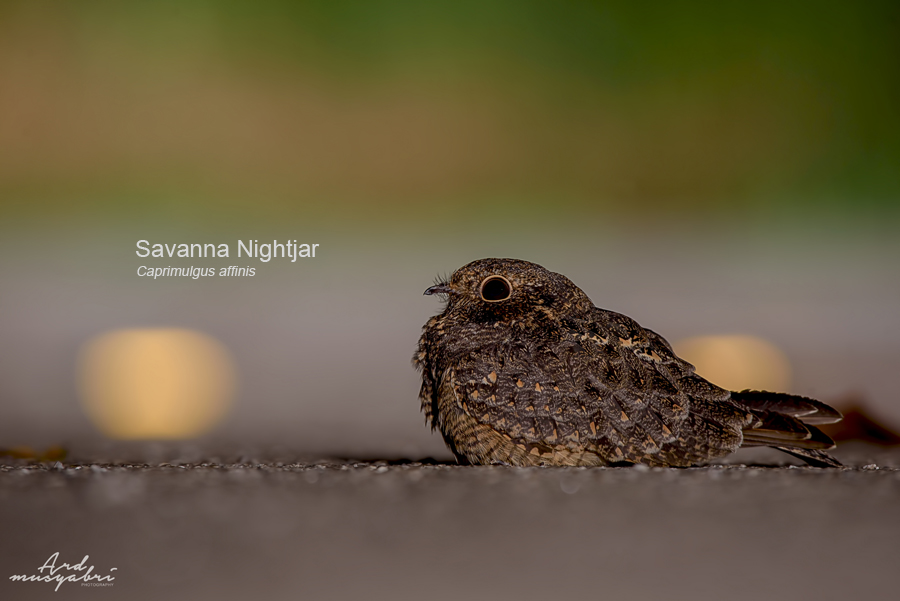
Savanna Nightjar (Caprimulgus affinis)
20-26cm; 54 – 110g. A small nightjar generally brown and has short tail. Male has white wing patches and white outer tail feathers while female has smaller wing patches. Usually active just after dusk with its repetitive inflight call “chweep”. It can be seen mainly in grassland and often high above ground hawking for moths, beetles and termites.
More info / source: https:/www.hbw.com/species/savanna-nightjar-caprimulgus-affinis
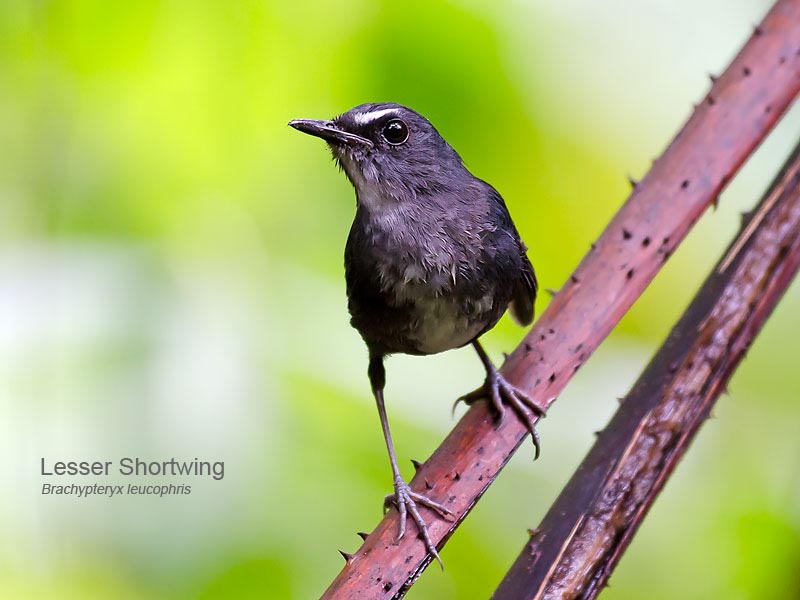
Lesser Shortwing (Brachypteryx leucophris)
44-48cm; 1011g. Relatively small with short wings and short tail. Male is slaty blue above while its neck and upper chest are bluish-grey. Female is brown above. The song is melodious but ends rather chaotically. It prefers staying in dense, dark and damp undergrowth. Mainly feeds on insects, grubs and beetle pupae.
More info / source: https://www.hbw.com/species/lesser-shortwing-brachypteryx-leucophris

Spotted Wood Owl (Strix seloputo)
44-48cm; 1011g. This nocturnal owl has rusty (orange-buff) facial disc. Generally brown upperpart with white spots while underpart has narrow black and broad white barring. Spotted Wood Owl can be heard calling with a series of rolling deep “whowhowhowhowho” or “huhuhuhuhu” at dusk and dawn. It prefers forest edge, trees near human settlement, orchards and plantations from coastal area up to 1000m. They feed mostly on small rodents, small birds (such as Eurasian Tree Sparrow) and large insects.
More info / source: https://www.hbw.com/species/spotted-wood-owl-strix-seloputo

Blue-eared Kingfisher (Alcedo meninting)
15-17cm; 16-31g. Blue-eared Kingfisher has blue head, white on the side of the neck and rufous underpart. Male has completely black bill while female has pinkish lower mandible. Its single high-pitched call “trreee-tee” or “tiiet” is similar to Common Kingfisher, probably little sharper. This species is mainly found along rivers and streams in the forest but sightings are possible near urban areas. While hunting or searching for food, this kingfisher will perch above water with head boobing before it dives into the water to catch its prey. Its diet consists of fish, crustaceans, and insects.
More info / source: https://www.hbw.com/species/blue-eared-kingfisher-alcedo-meninting
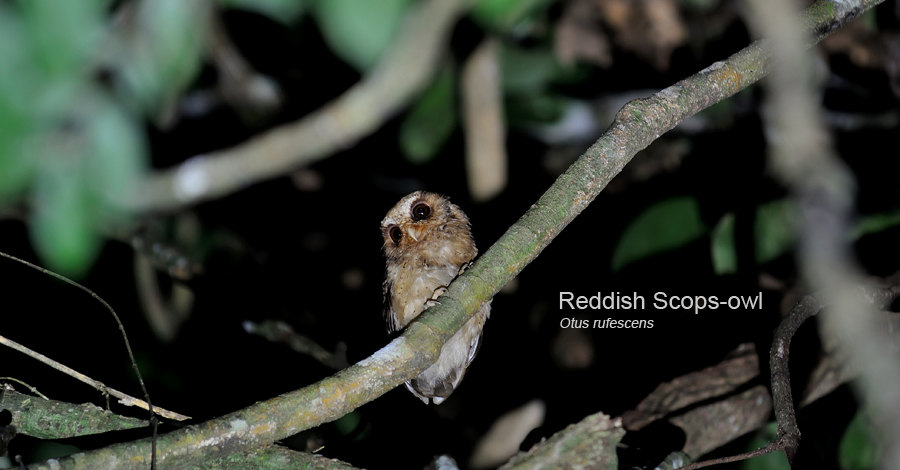
Reddish Scops-owl (Otus rufescens)
15-18cm; 70-83g. This relatively small sized owl has ear tufts, yellowish pink bill and its forehead as well as eyebrows are buffy to white. Upper plumage is rufous / cinnamon brown while underpart is paler with dark spots. Although it is rarely seen and photograph, it can probably be considered common in few localities in the country, especially Taman Negara. Listen to its hollow whistle “hoooo” repeated between 7-11 seconds at night to locate the owl. This species occurs in the lowland forest up to elevation of 1000m above sea level. There is little information on its feeding habit but grasshoppers and crickets were found inside dead specimens.
More info / source: https://www.hbw.com/species/reddish-scops-owl-otus-rufescens
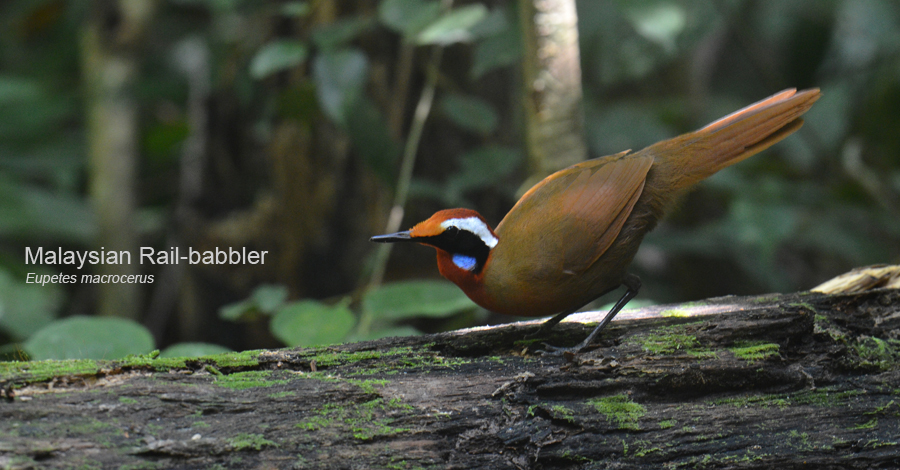
Malaysian Rail-babbler (Eupetes macrocerus)
28-30cm; 66-72g. Highly unmistakeable. This unique bird has long neck, long tail and broad white supercilium. During vocalisation, it raises the tail, lower its body and inflate its blue throat patches. Soft cluckings can be heard at close range too. It lives on forest floor of lowland forest as well as hill forest and feeds on insects such as cicadas, beetles and spiders.
More info / source: https://www.hbw.com/species/rail-babbler-eupetes-macrocerus
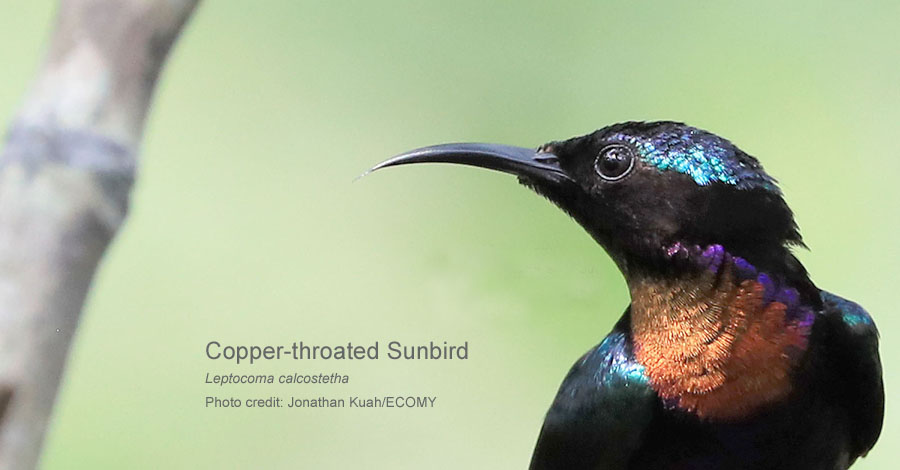
Copper-throated Sunbird (Leptocoma calcostetha)
12·2–13 cm. Male has top of head metallic green, sides of head, hindneck, upper back, wing and tail black, lower back, rump and upperwing-coverts green, and obviously copper-red throat. Female has greyish head, white throat and white outer tail tip. Utters both a high trill, and a deep melodious trill. This species inhabits mangroves, heath forest, alluvial forest, and secondary forest. It feeds on nectar of Bruguiera trees and small arthropods. It is always seen actively foraging in lower and middle storeys.
More info / source: https://www.hbw.com/species/copper-throated-sunbird-leptocoma-calcostetha
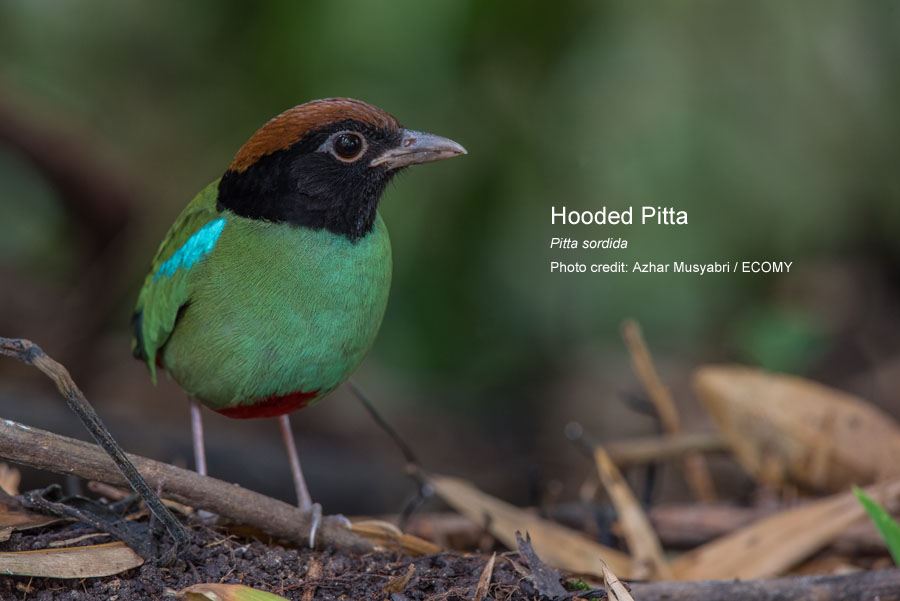
Hooded Pitta (Pitta sordida)
16–19 cm; 42–80·4 g. Head, including chin and throat black, crown and nape brown, upperparts dark green. Call somewhat variable “whep-whep”, “whew-whew” or squeky “skyew” when alarmed. It occupies a wide range of habitats including all types of forest, but often seen in primary riverine forest. Their diets consist of insects including beetles (Coleoptera), ants, termites (Isoptera), Orthoptera, cockroaches (Blattodea), bugs (Hemiptera), and variety of larvae;
More info / source: https://www.hbw.com/species/western-hooded-pitta-pitta-sordida
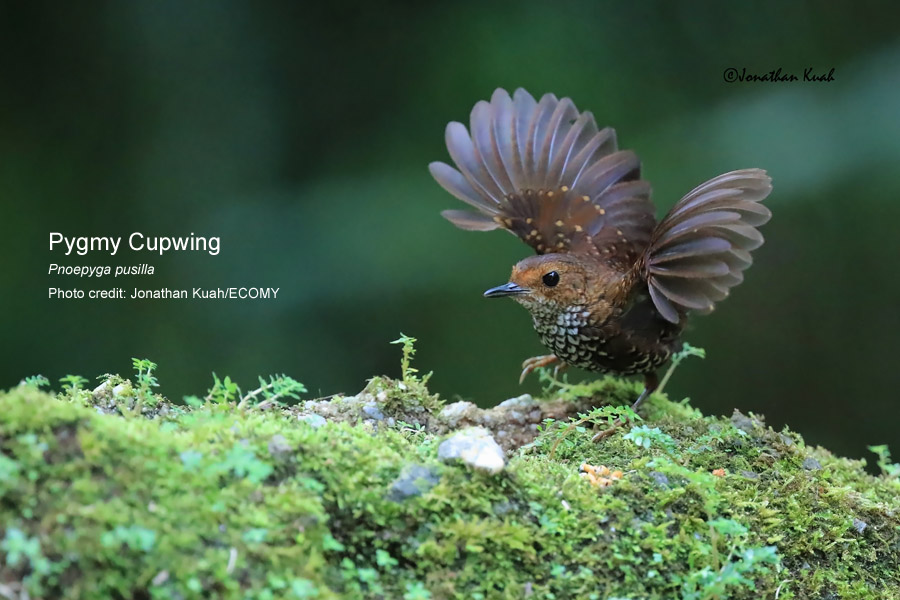
Pygmy Cupwing (Pnoepyga pusilla)
7·5–9 cm; 11–15 g. Tiny, almost tailless olive-backed babbler with pale scaling below. Song is unmistakable, very high-pitched, well-spaced, piercing “ti-tu” or “ti-ti-tu”. It prefers the understorey of broadleaf evergreen forest, densely vegetated forest ravines and mossy habitat. This tiny bird forages on the ground to catch ants (Formicidae) and other small insects as well as spiders (Araneae), snails and grubs.
More info / source: https://www.hbw.com/species/pygmy-cupwing-pnoepyga-pusilla
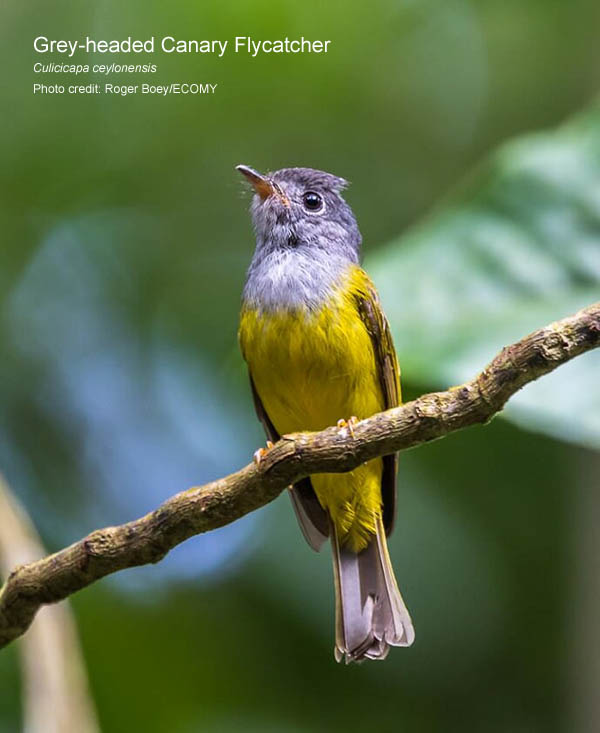
Grey-headed Canary Flycatcher (Culicicapa ceylonensis)
12–13 cm; 6–9 g. Small to medium-sized, slender, upright forest flycatcher with crested head shape. It has grey head to nape, side of neck and upper breast and bright yellow underparts. Noisy and vocal throughout the year. Song is a loud and squeaky, high-pitched “wittu-wittu-wit”; “chuit-it-ui” or “witti-wuti”. It prefers mature and secondary dry broadleaved forests and woodlands. Major diet includes gnats and mosquitoes (Culicidae), other dipteran flies, also beetles (Coleoptera), wasps (Hymenoptera), moths (Lepidoptera).
More info / source: https://www.hbw.com/species/grey-headed-canary-flycatcher-culicicapa-ceylonensis

Gould’s Frogmouth (Batrachostomus stellatus)
21–25 cm; 47–48·5 g. Occurs in two colour morphs. Adult has narrow whitish collar across mantle, bold whitish spots on wing-coverts and scaled underparts. Song is an eerie “wooah-weo”, with first note drawn-out and second descending. Found in the dense forest, sometimes secondary forest and prefers lower storey. Diet known to include Orthoptera such as grasshoppers and crickets, and also moths (Lepidoptera) and beetles (Coleoptera).
More info / source: https://www.hbw.com/species/goulds-frogmouth-batrachostomus-stellatus
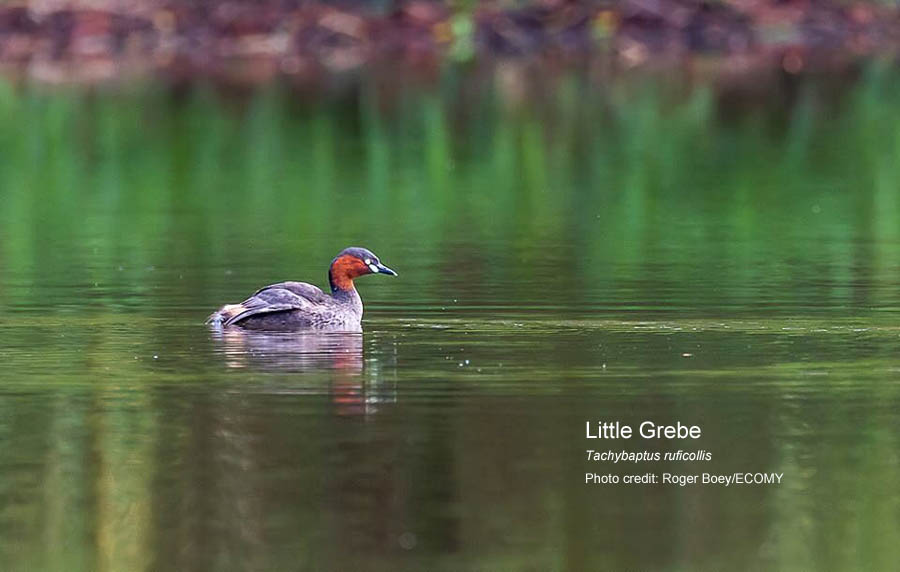
Little Grebe (Tachybaptus ruficollis)
25–29 cm; 130–236 g. Small and dumpy, the rump often appearing very fluffy. During breeding, blackish-brown cap down to just behind eye and to chin, yellow eyes and dark bill with prominent yellowish gape.
Loud, fast trill given by both sexes.
Found in a wide range of wetlands, normally small and shallow, including small lakes, ponds, and canals.
Mainly insects and larvae feeder, consisting of mayflies (Ephemeroptera), stoneflies (Plecoptera), various water bugs (Heteroptera), beetles (Coleoptera) and others.
More info / source: https://www.hbw.com/species/little-grebe-tachybaptus-ruficollis
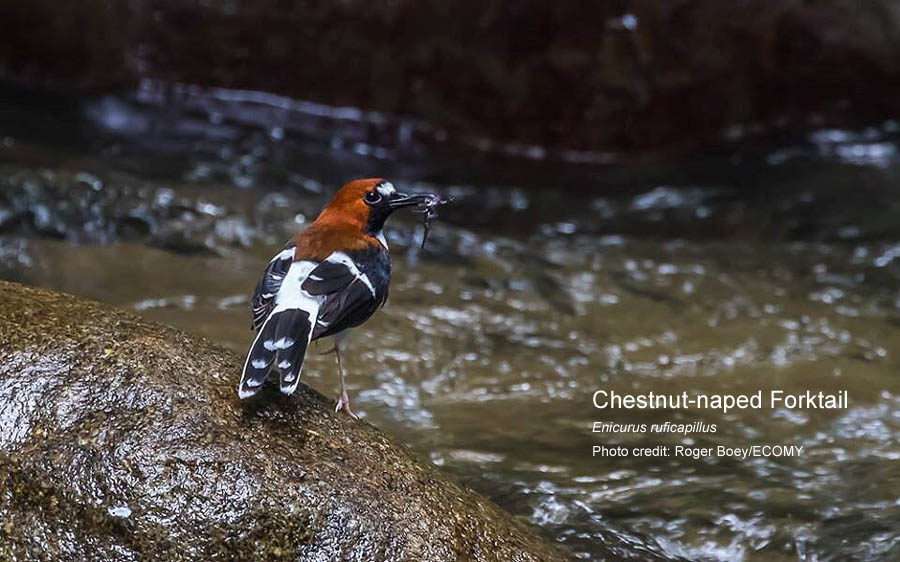
Chestnut-naped Forktail (Enicurus ruficapillus)
18–20 cm; 27 g. Long, deeply forked but evenly graduated tail with white tips, two outer feathers entirely white. Male has rich chestnut crown to nape while female has chestnut crown, nape and back. Both has scaled white breast. Call, in low flight, a penetrating whistle or three loud whistles with middle note higher. Found along small clear shady rivers, streams and waterfalls in the forest. Diets consist of terrestrial invertebrates including beetles, larvae, ants and other insects.
More info / source: https://www.hbw.com/species/chestnut-naped-forktail-enicurus-ruficapillus
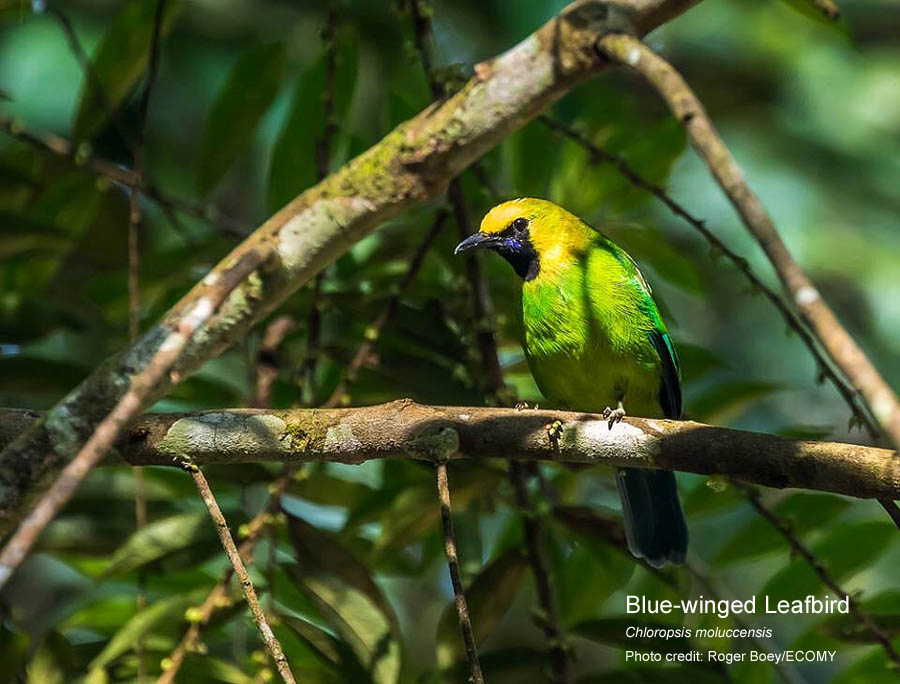
Blue-winged Leafbird (Chloropsis moluccensis)
15·8–17·7 cm; male 20–28·5 g, female 19–25 g. Male has black mask from lores to throat. Song of various musical, liquid notes “pli-pli-chu-chu” and “chi-chi-pli-i”. It usually stays high in the canopy and edge of forests. Varied diet which includes arthropods, fruits, probably also nectar.
More info / source: https://www.hbw.com/species/blue-winged-leafbird-chloropsis-moluccensis
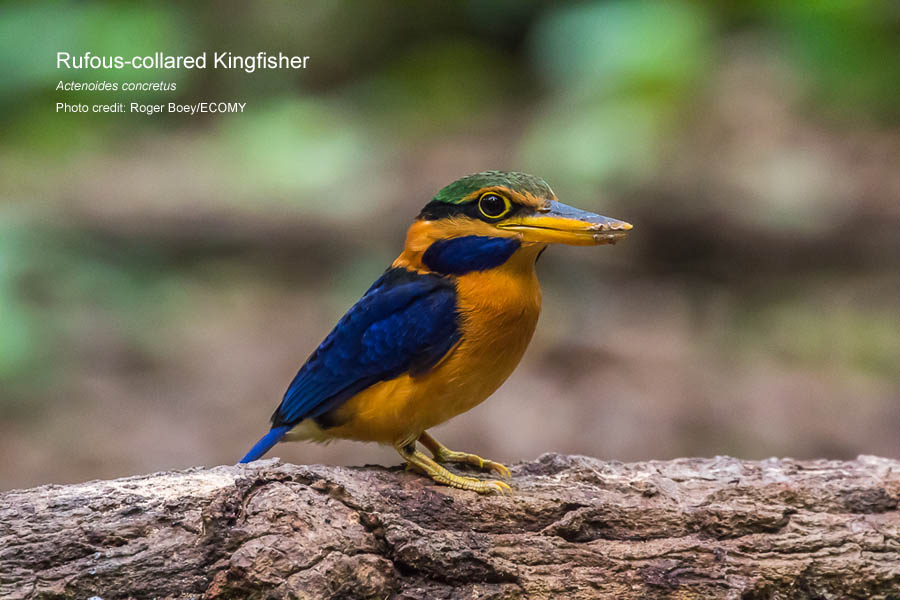
Rufous-collared Kingfisher (Actenoides concretus)
23–25 cm; male 62–89 g, female 60–90 g. Solid, medium-sized kingfisher. Male nominate race green cap, light blue hindcrown, black eyeband and rufous collar and breast. Female has buffy speckled coverts. Call soft to loud, rising, repeated whistle, “kwee-i”, at rate of 1 per second.
It inhabits Evergreen to semi-evergreen dense lowland forest, also forest regenerated to closed-canopy stage, near water, up to 1,200m asl. Among its main diet includes invertebrates such as Isopoda, cicadas (Cicadidae), longicorn beetles (Cerambycidae), mantises (Mantodea), spiders, and scorpions.
More info / source: https://www.hbw.com/species/rufous-collared-kingfisher-actenoides-concretus

Rhinoceros Hornbill (Buceros rhinoceros)
80–90 cm; male 2465–2960 g, female 2040–2330 g. Large mainly black hornbill with white thighs and vent, black band across white tail; bill mostly pale yellowish to whitish while its upward curved casque is red and yellow. Male has reddish eyes with black eyering while female has whitish eyes with red eyering.
A series of short, explosive, resonant “rroh” calls. Pairs also call antiphonally or simultaneously when flying with a loud ger-ronk.
Usually found in pairs in extensive areas of primary evergreen forest, extending into tall secondary forest.
Feeds mainly on fruits, especially figs, but also various lipid-rich capsules and drupes; in addition, eats any small animals it can catch.
More info / source: https://www.hbw.com/species/rhinoceros-hornbill-buceros-rhinoceros

Bornean Bristlehead (Pityriasis gymnocephala)
22–26 cm; 115–150 g. Heavy-bodied passerine with massive hooked bill and short tail, giving top-heavy appearance, and long powerful wings. Male has unfeathered heads.
Calls frequently, with variety of snorts and whistles.
Forest. Often said to favour peatswamp-forest, but is probably most commonly associated with lowland and hill primary forests.
Major food items include katydids (Tettigoniidae), cicadas (Cicadoidea), stick-insects (Phasmida), beetles (Coleoptera), caterpillars etc..
More info/source: https://www.hbw.com/species/bornean-bristlehead-pityriasis-gymnocephala

Malay Partridge (Arborophila campbelli)
Other common names: Malaysian Partridge, Malaysian Hill-partridge, Campbell’s Hill-partridge
Taxonomy: Arboroicola campbelli borders of Perak and Penang, Malay Peninsula.
Until recently considered conspecific with A. rolli, A. sumatrana and A. orientalis (which see). Sometimes also considered conspecific with A. javanicaand A. brunneopectus, but morphological similarities normally attributed to convergent evolution. Monotypic.
Distribution: Mountains of Peninsular Malaysia.
More info/source: https://www.hbw.com/species/malay-partridge-arborophila-campbelli

Orange-backed Woodpecker (Chrysocolaptes validus)
Description: 30 cm; 155–185 g. Male has red forehead, crown and short crest bordered pale orange, orange-brown side of head, darker and browner towards rear; chin and malar area.
Voice: Various loud, ringing calls, e.g. “pit”, singly or in loose irregular series.
Habitat: Primary or secondary evergreen rainforest, coastal vegetation, mature plantations.
More info/source: https://www.hbw.com/species/orange-backed-woodpecker-chrysocolaptes-validus
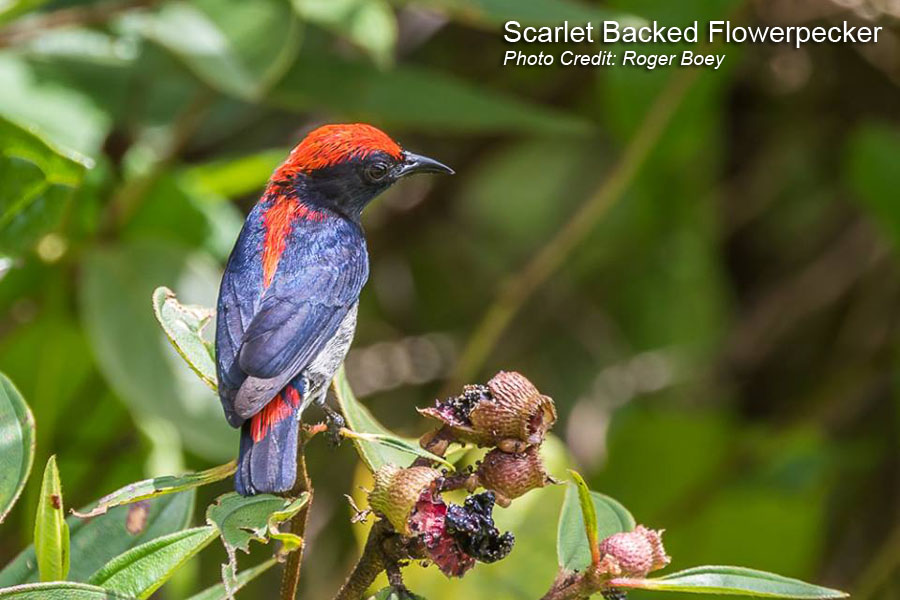
Scarlet-backed Flowerpecker (Dicaeum cruentatum)
Description: 7–9 cm; male 5·5–8 g, one female 6 g. Male nominate race has crown to back and rump deep red, side of head black, upperwing and tail glossy blue-black.
Voice: Call “chip-chip”, sometimes repeated; also a loud, staccato, clicking “tchik-tchik”..
Habitat: Variety of forest types, including mangroves, heath forest and alluvial forest, regenerating forest…
More info/source: https://www.hbw.com/species/scarlet-backed-flowerpecker-dicaeum-cruentatum

Red-crowned Barbet (Psilopogon rafflesii)
Description: 26 cm; 99–150 g. Large, chunky green barbet. Both sexes have red crown, red spot below eye, red mark on side of neck, black and yellow face, as well as blue throat..
Voice: Song starts with low “took” notes at 1 per second, leading to “tuk” notes.
Habitat: Inhabits primary forest, as well as old second-growth forest
More info/source: https://www.hbw.com/species/red-crowned-barbet-psilopogon-rafflesii

Blue-winged Pitta (Pitta moluccensis)
Description: 18–20 cm; 54–146 g. Adult has blackish head with broad buffy brown sides of crown and buffy supercilium; upperparts dark green, rump turquoise-blue, tail black.
Voice: Loud clear “taew-laew”, second note stressed, usually doubled as “taelaew-taelaew.
Habitat: Found in variety of habitats, from moist or dry primary forest with dense or sparse undergrowth.
Diet includes many kinds of insects etc.
More info/source: https://www.hbw.com/species/blue-winged-pitta-pitta-moluccensis

Black-backed (Oriental) Kingfisher (Ceyx erithaca)
Description: 12·5–14 cm; male 14–21·5 g, female 14–16 g. Both sexes of nominate race have black spot on forehead, blue and white patch on side of neck.
Voice: High-pitched “tsriet-tsriet” or soft “tjie-tjie-tjie” in flight.
Habitat: Deciduous and evergreen primary and secondary forest, alluvial forest, mangroves, overgrown rubber estates.
More info/source: https://www.hbw.com/species/oriental-dwarf-kingfisher-ceyx-erithaca

Brown-throated Sunbird (Anthreptes rhodolaemus)
Description: 12 cm; male 11·2 g, female 11·6 g. Male has crown to mantle dark metallic green, maroon band across upper back, rest of back, rump and uppertail-coverts violet.
Voice: Various chirps and metallic trills; song a high “sit-sit-sit-see”.
Habitat: Various forest types, including peatswamp-forest, secondary growth, plantations, clearings and etc
More info/source: https://www.hbw.com/species/brown-throated-sunbird-anthreptes-malacensis

Oriental Dollarbird (Eurystomus orientalis)
Description: t27–32 cm; male 109–175 g and female 117–186 g (orientalis, pacificus, solomonensis), male 165–214 g and female 164–..
Voice: Typically rather silent. Commonest call is a repeated short, hoarse, rasping “rak” or “chak”.
Habitat: Mainly woodland, including canopy and margins of primary lowland rainforest, riparian wood, etc
More info/source: https://www.hbw.com/species/oriental-dollarbird-eurystomus-orientalis#Taxonomy

Fluffy-backed Tit-babbler (Macronus ptilosus)
Description: 16·5–17 cm; 18–34 g. Dark rich brown babbler with chestnut crown and black throat; elongate plumes of lower back and rump usually unapparent.
Voice: Song a repeated, rather low, long, liquid “puh puh-puh-puh” or slower “wuh wu-hu”.
Habitat: Undergrowth of secondary and selectively logged forest, forest edge, dense secondary growth, growth etc
 birds malaysia
birds malaysia